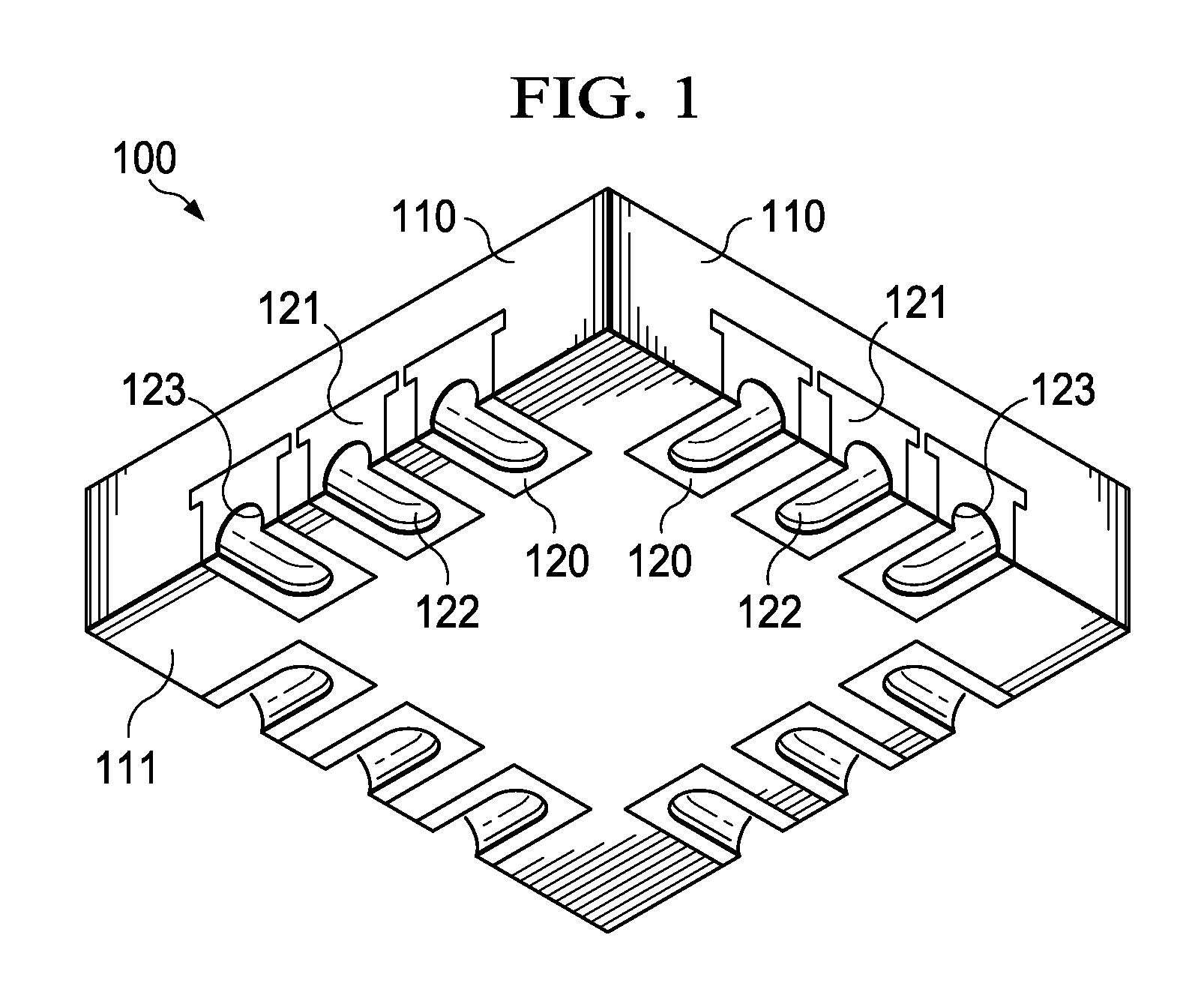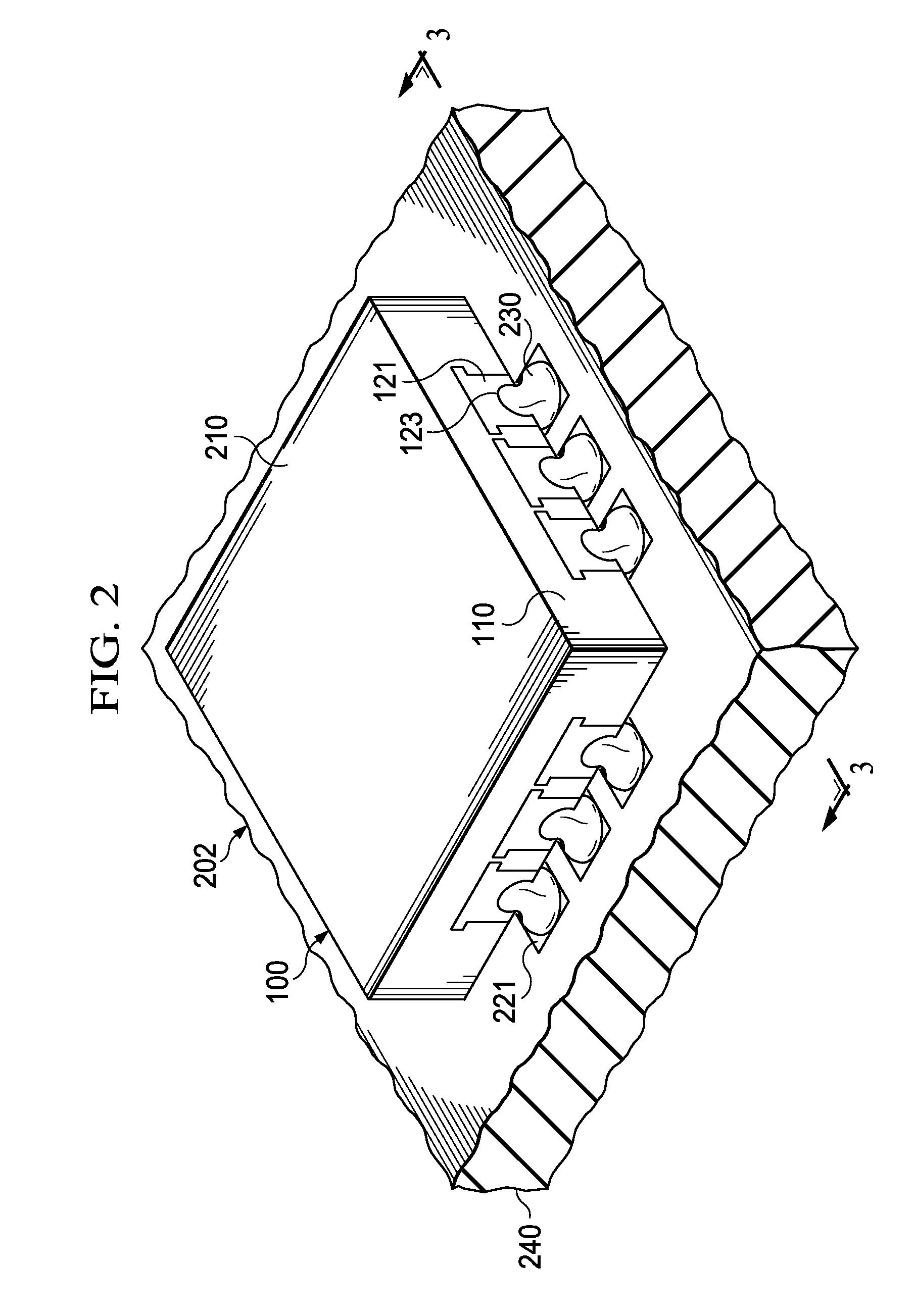Semiconductor Package Leads Having Grooved Contact Areas
a technology of contact area and semiconductor, which is applied in the direction of printed circuit aspects, sustainable manufacturing/processing, final product manufacturing, etc., can solve the problems of erratic oxidation of the base metal at the cut line, inconsistent and unreliability of the solder wet solder, and erratic wettability of the solder. , to achieve the effect of significant yield saving and reliability of the assembled devi
- Summary
- Abstract
- Description
- Claims
- Application Information
AI Technical Summary
Benefits of technology
Problems solved by technology
Method used
Image
Examples
Embodiment Construction
[0017]FIG. 1 is a schematic perspective view of the bottom surface of an exemplary semiconductor device, generally designated 100, of the Small Outline No-Lead (SON) or Quad Flat No-Lead (QFN) family. The device is packaged in an insulating encapsulation material, preferably a molding compound, and has metal terminals 120, preferably made of copper or a copper alloy as the base metal. The SON / QFN device family covers a wide spectrum of device shapes (usually hexahedron, square or rectangular cross section), sizes (length less than 1 mm to more than 10 mm), and numbers and distributions of terminals. To mention only a few examples of the terminal numbers, SON / QFN devices sized 4 mm×4 mm may have 16 or 24 terminals; devices sized 5 mm×5 mm may have 16, 20, or 32 terminals; devices sized 6 mm×6 mm may have 20 or 28 terminals; devices sized 7 mm×7 mm may have 32 or 44 terminals; and a device sized 8 mm×8 mm may have 56 terminals. In the latter example, the pitch center-to-center of the ...
PUM
 Login to View More
Login to View More Abstract
Description
Claims
Application Information
 Login to View More
Login to View More - R&D
- Intellectual Property
- Life Sciences
- Materials
- Tech Scout
- Unparalleled Data Quality
- Higher Quality Content
- 60% Fewer Hallucinations
Browse by: Latest US Patents, China's latest patents, Technical Efficacy Thesaurus, Application Domain, Technology Topic, Popular Technical Reports.
© 2025 PatSnap. All rights reserved.Legal|Privacy policy|Modern Slavery Act Transparency Statement|Sitemap|About US| Contact US: help@patsnap.com



